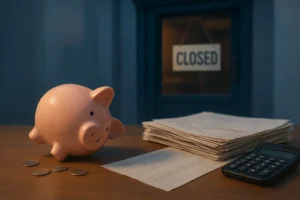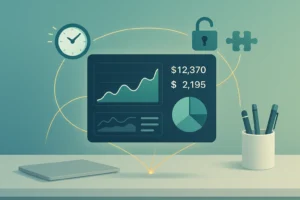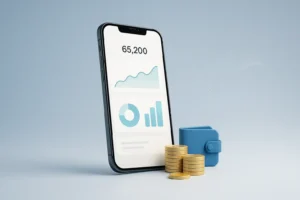Managing debt during retirement presents unique challenges that require strategic planning and careful consideration. This article outlines five practical approaches to handling financial obligations in your later years, featuring advice from financial experts who specialize in retirement planning. These proven strategies can help retirees maintain financial stability while effectively reducing debt burdens.
- Avalanche Technique Prioritizes Highest Interest Rates
- Consolidate Debts Into One Lower Payment
- Pay High-Interest Debt First While Budgeting Wisely
- Fix, Shrink, and Ring-fence Before Retirement
- Address Debt Quickly Through Negotiation
Avalanche Technique Prioritizes Highest Interest Rates
I recommend the Avalanche Technique for managing debt. To optimize this strategy, you must first divide your debt/expenses into two categories: Discretionary and Non-Discretionary.
Discretionary expenses are expenses that fluctuate and you have control over. How much food you buy at the grocery store? How much you pay for clothes? And other expenses like how often you drive and fill up your gas tank?
Non-Discretionary expenses are expenses that have to be paid even if they fluctuate and are out of your control. These expenses include but are not limited to your mortgage, utilities, and auto loans.
The Avalanche Technique is a debt paydown strategy that prioritizes the debt with the highest interest rate first. If you have 3 Credit Cards: Credit Card A, Credit Card B, and Credit Card C, and they have an interest rate of 22%, 19%, and 28% respectively, you would pay down Credit Card C first, Credit Card A second, and Credit Card B third. Make sure you make the minimum payments on each card, so as not to incur additional charges and fees.
Non-Discretionary expenses take priority when paying down debt regardless of the interest rate. I recommend paying down that debt in order of importance of sustaining your lifestyle. For example, the mortgage, utilities, auto loans, etc.
Once your top debt is paid off, take the amount paid and move it to the next highest interest card, creating the avalanche technique.
This technique is simple in theory but can get complex with multiple debt accounts. I recommend speaking with a financial advisor to create a paydown schedule that works with your timeline and your available cash.
Mathematically, the Avalanche Technique will pay your debt down in the shortest time possible if you don’t miss a payment. If this strategy is too difficult, you can always leverage the Snowball Technique which starts with the debt with the lowest balance or use a combination of both techniques to reach your desired results.
The Avalanche Technique is a mathematical win, and the Snowball Technique is more of a psychological one. If you need a quick win, paying a card with a low interest rate but also a low balance may give you the momentum you need to tackle larger debts.

Consolidate Debts Into One Lower Payment
A smart financial strategy in retirement is to combine high-interest debts into one payment with a lower interest rate. Bringing credit cards, personal loans, and medical bills together in a single payment keeps finances simpler. It helps retirees, especially those on a fixed income, keep monthly bills under control and save money on interest.
Retirees often tell me it feels like a weight lifted and they feel more in control of their finances when implementing this strategy.
The best way to approach debt management is to tackle the debts with the highest interest rates first. Credit cards and personal loans can really add up fast, and before you know it, the total amount you owe can be a lot more than you ever expected. By taking care of those high-interest debts early on, you can save yourself a small fortune.
Your payoff plan should start with reviewing each debt carefully. Note how much you owe. Include the interest and what you pay each month. This step will help you figure out which ones to pay off first.
Getting started comes down to finding what works for you. Maybe you want to pay off high-interest debts first, or maybe you’d rather see quick wins on smaller ones. Either way, your monthly budget with living expenses included should keep things steady and realistic.
I remind my clients that it is harder to make progress if new debt keeps piling on. Try to limit credit spending and only borrow when there is no other option.
Last thing to remember: if payments feel stressful, don’t try to handle it alone. Talk with a professional. They can help you understand debt consolidation. You can also explore settling your balances. There are programs for hardship that might make things easier.

Pay High-Interest Debt First While Budgeting Wisely
One of my go-to suggestions for paying off debt in retirement is to pay off high-interest debt first and only make minimum payments on other debts. It makes sense to balance paying off debt with keeping cash flow intact for living costs and medical expenses, as retirees have limited or fixed income. I personally try to address credit card debt or other high-interest loans before lower-interest debt such as a mortgage.
My recommendation to others is to establish a solid budget, know precisely what you owe, and consider options such as debt consolidation or negotiating reduced interest rates when it is an option. Being on top of things, being open with creditors, and not taking on new unnecessary debt can be a huge help. Even during retirement, an organized plan regarding debt will keep one financially secure and at ease.

Fix, Shrink, and Ring-fence Before Retirement
My go-to strategy is “fix, shrink, and ring-fence” your debt 12-24 months before retirement. First, fix anything variable to a simple, fixed rate and term you can live with. Second, shrink balances by attacking the highest-rate, unsecured items first (cards, personal loans), then anything variable; leave a low-rate mortgage for last if preserving liquidity matters. Third, ring-fence the risk: aim for total monthly debt payments to stay well under 10% of your guaranteed income (pensions/annuities/SS) and keep 6-12 months of payments in cash so a market dip doesn’t force you to sell assets at the wrong time. My prioritization is the avalanche method (highest rate to lowest), but I’ll take a quick small win early if it keeps people motivated. The most practical advice: write a one-page “retirement debt policy” — what you’ll pay off, what you’ll keep, and the exact payment plan — then put everything on autopay and review it once a quarter.

Address Debt Quickly Through Negotiation
We encourage retirees to address debt head on. If debt is unsustainable, it is better to address it quickly and not make sporadic or minimum payments for years only to end up in the same situation years later. Creditors are often willing to negotiate with seniors since, depending on sources of income, retirees can be much harder to collect from. In a perfect scenario, people are headed into retirement with minimum or no debt. Having retirement income come in, be taxed, and go out the door to a creditor is just like not having that income at all.














